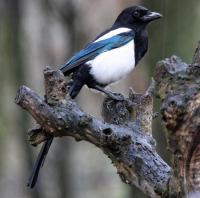- Home
- FAQs
- Customer Video Gallery
- Customer Photo Gallery
- Bird Facts
- Bird Food Blog
- Bird Information
- Feeding Advice
- Small Animal Information
- A to Z of Guinea Pigs
- A to Z of Hamsters
- A to Z of Rabbits
- Basic Care for Guinea Pigs
- Basic Care for Hamsters
- Basic Care for Rabbits
- Basic care for Chinchillas
- Basic care for Ferrets
- Basic care for Gerbils
- Basic care for Mice
- Basic care for Rats
- Buying a Healthy Small Animal
- Does your Reptile need a Licence
- Equipment for Ferrets
- Equipment for Hamsters
- Equipment for Mice
- Equipment for your Chinchilla
- Equipment for your Gerbil
- Equipment for your Guinea Pig
- Equipment for your Rabbit
- Keeping a House Rabbit
- Dog Information
- Cat Information
- Customer Information
- Fat Balls
- Suet Pellets
- Straights
- Seed Mixes
- Suet Treats
- Mealworms
- Bird Feeders
- My Account
Tits in Snow
Date: 2016-01-27 21:17:40 | Category: Bird Feeding | Author: David Cole
From the BTO’s latest newsletter……"The unusually warm end to 2015 has resulted in quiet bird tables this winter, according to the British Trust for Ornithology (BTO). As soon as the January cold snap arrived, however, BTO Garden BirdWatchers started reporting more Wrens, Goldcrests and Long-tailed Tits in their gardens. These tiny birds are vulnerable to freezing weather, and are quick to take advantage of the lifeline provided by garden bird feeders when conditions change."
An unusual start to the winter, including the warmest December on record, meant that there were few large influxes of birds into our gardens. The warm weather, combined with plenty of food in the wider countryside, meant that there was no need for birds to seek the food or shelter that we provide. Last week’s colder weather, however, brought a change with it for some of our smaller birds.
The number of BTO Garden BirdWatch reports of Goldcrests, Long-tailed Tits and Wrens went up once frost and chilly temperatures set in. The average weekly reporting rate of Long-tailed Tit rose by nearly 10% from December to January, with smaller but noticeable increases of 4% and 3% for Wren and Goldcrest respectively.
This is most likely due to the fact that up until mid-January they were able to feed on the extraordinary number of insects that were still around. Once the weather turned colder, these would have become harder to find and therefore, insectivorous birds had to turn elsewhere for food. This shows the importance of feeding birds throughout mild weather so that it is there when the birds are in need.
Clare Simm, from the BTO Garden BirdWatch team, commented, "The reason we can see the effects of changing weather conditions from week to week is thanks to the thousands of people who collect data for us throughout the year. By just counting garden birds for a few minutes a week, BTO Garden BirdWatchers can help us understand how our gardens are used by birds."
Will these small birds remain in our gardens or will they leave as the weather turns warmer again? Your help is needed to find out.”
The BTO currently has more than 13,000 people taking part in their Garden Birdwatch but they would be delighted to receive even more data if you have time to sign up – my own bird tables seem to reflect closely the BTO’s results and observations – a brief flurry of the white stuff certainly concentrated the minds of my tit population!!!





